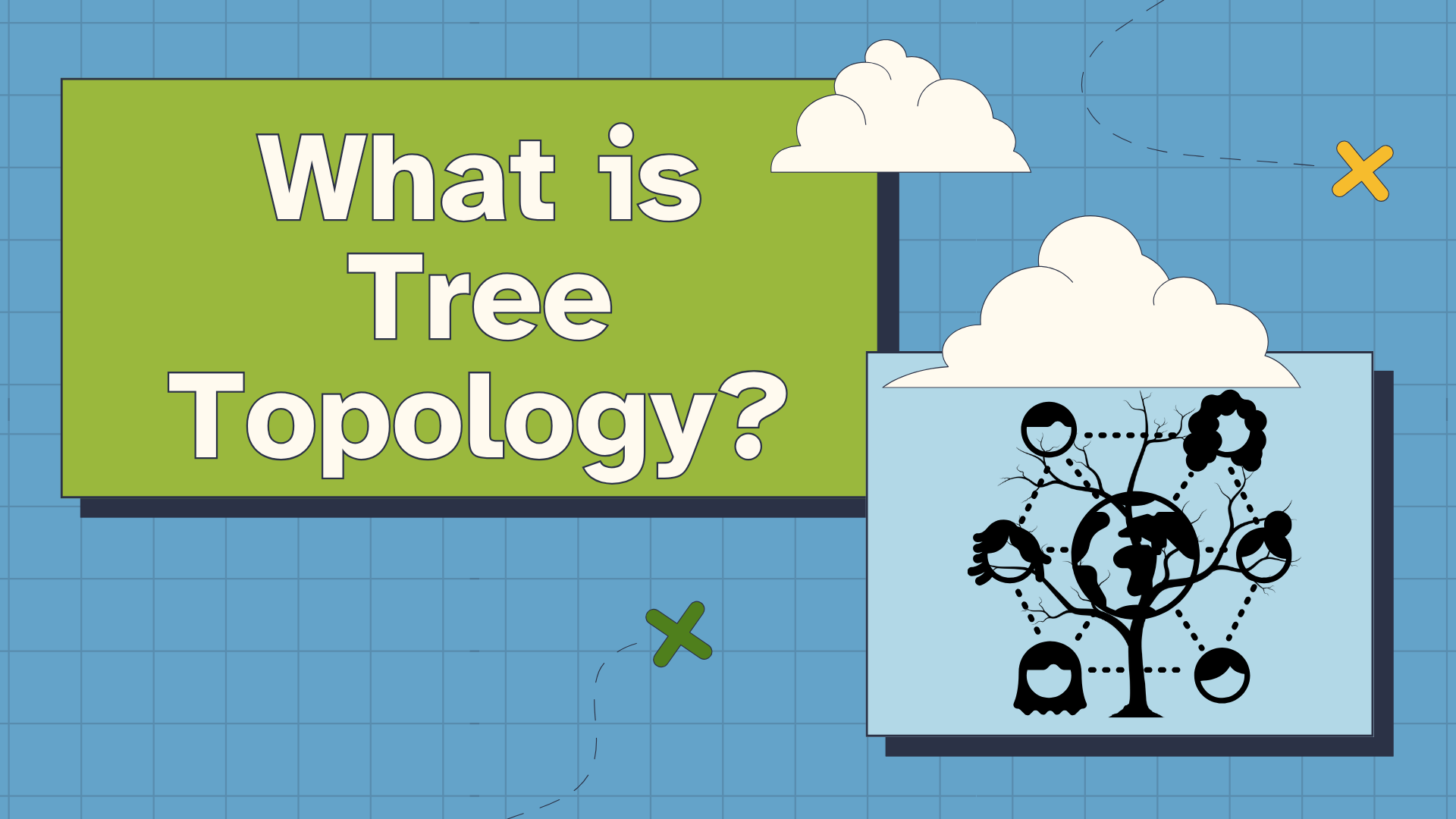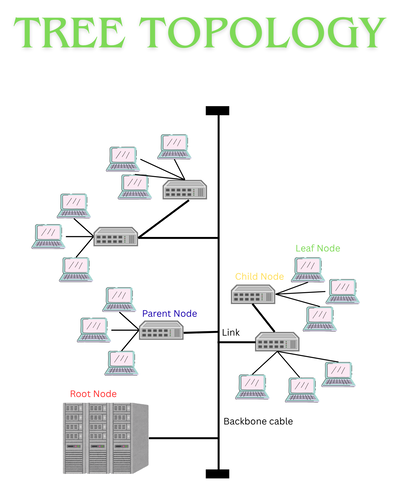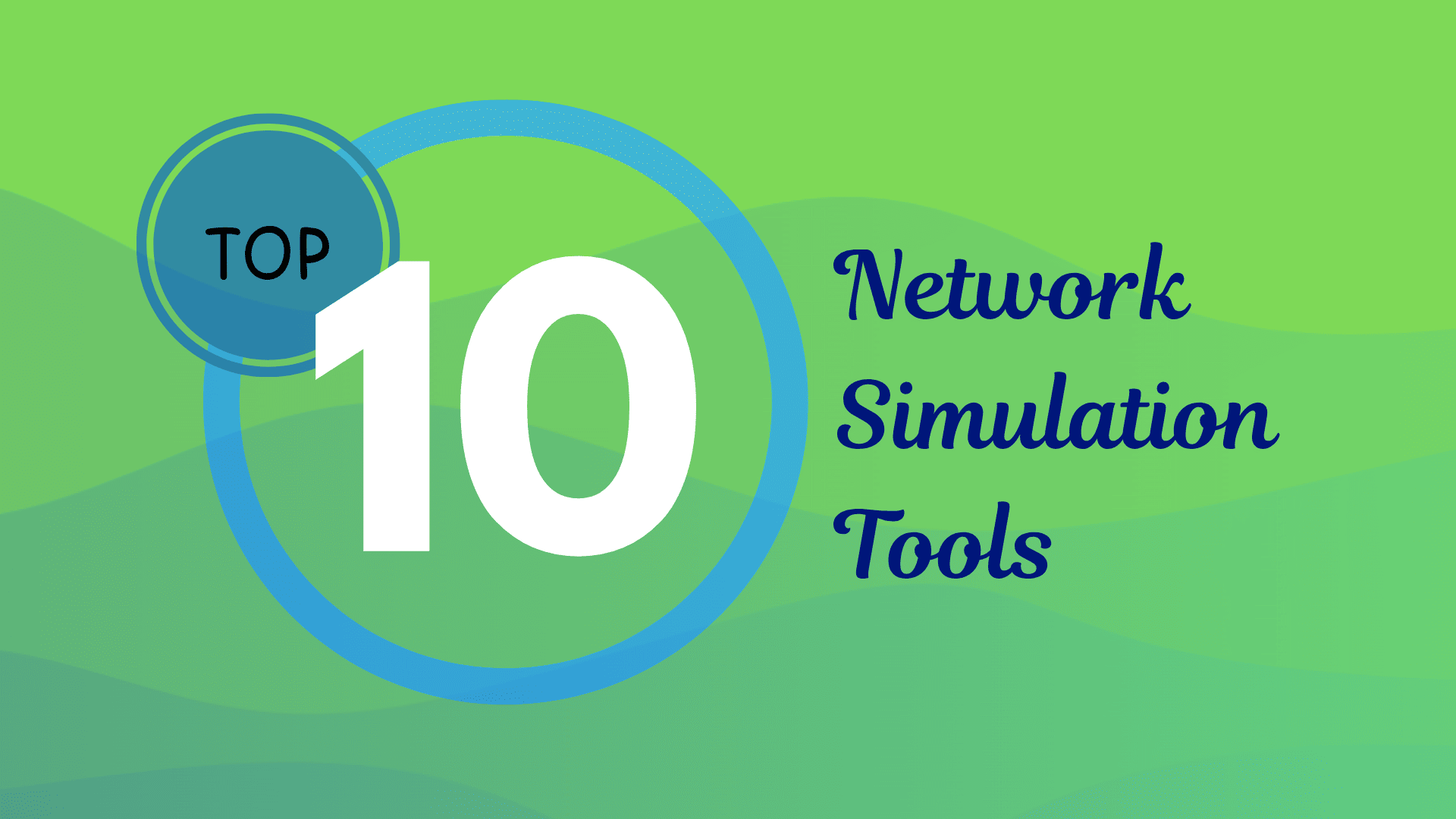
In computer networks, topology refers to the arrangement of devices within a network. The Tree topology is a hierarchical and adaptable structure that is frequently utilized in large networks. It is a popular option for intricate and scalable network architectures, as it combines the best features of both bus and star topologies.
This article explains the meaning and structure of tree topology in computer networks, and highlights its uses, advantages, and disadvantages in networking.
Also, if you are interested in building a career in computer networking and want to learn different skills or get training for certifications, you should check out our IT Networks Courses.
What is Tree Topology?
Tree topology, also known as hierarchical topology, is a combination of star and bus topologies. In a tree network, there's a main line (like a trunk) similar to a bus cable, and smaller groups of computers branch off from it, like branches.
This arrangement of devices is hierarchical and tree-like. Having the roots at the top and the leaves at the bottom, this structure resembles an inverted tree.

Where is Tree Topology Used?
A classic example of tree topology, which most people don't notice, is an Internet Service Provider (ISP) network. Imagine the ISP's national backbone (root node) connecting to major regional hubs (parent nodes) in different cities. Each regional hub then branches out to local central offices (further parent nodes) in neighborhoods. Finally, these local offices connect directly to individual customer homes or businesses (leaf nodes).
Data from your home flows up through the local office, then the regional hub, and onto the national backbone to reach the wider internet, and vice-versa. This hierarchical structure allows the ISP to efficiently manage and scale its network to serve thousands of customers across vast geographic areas. Cable TV providers often use a similar tree structure.

Other Applications of Tree Topology
In enterprises, departments are grouped into local networks that connect through a central backbone. This setup makes network expansion easier and allows for centralized management.
● In schools and universities, tree topology connects buildings, classrooms, and labs to shared resources like servers, printers, and internet access.
● Data centers use a similar structure with core, distribution, and access layers to improve performance, manage traffic, and increase reliability.
● In cloud and hybrid IT environments, tree structures help organize virtual networks, subnets, and gateways. This allows for clear control paths, security policies, and separation between services.
● Tree topology is also used in smart buildings, industrial systems, and city infrastructure to manage sensors, devices, and subsystems from a central location.
Components of Tree Topology
A tree network will consist the following components:
1. Root Node
The root node sits at the top of the tree topology. It is usually a central server, main hub, or backbone switch that connects and manages the entire network. All data flowing between branches ultimately passes through this central point.
2. Parent Nodes
Parent nodes are devices like switches or hubs that are directly connected to the root node. They act as central points for their respective branches and manage communication between the root and the lower-level nodes.
3. Child Nodes
Child nodes connect to parent nodes and can either be end devices or additional switches. When switches are used as child nodes, they extend the hierarchy by creating sub-branches with more connected devices.
4. Leaf Nodes
Leaf nodes are the final devices in the network structure. These include workstations, printers, and other end-user devices. They sit at the outermost ends of the branches and do not connect to any further nodes.
5. Links
Links are the physical or wireless connections that join nodes across different levels of the topology. These connections ensure data can travel between the root, parent, child, and leaf nodes efficiently.
How Does Tree Topology Work?
In a tree topology, data transmission follows the network’s hierarchical structure. When devices within the same local branch communicate, the data is transferred directly through that parent node, like how data flows in a star topology segment.
However, when devices belong to different branches (parent nodes), the data must ascend the hierarchy to reach a common parent node, often the root or a higher-level parent switch, before being routed downward through the appropriate path to reach the destination.
These upper-level nodes, including the root, serve as central traffic controllers. They handle the routing or switching of data between segments, ensuring that packets are correctly directed across the network branches. This design not only organizes traffic efficiently but also centralizes control, making it easier to manage large-scale communication.
How is Data Transmitted in Tree Topology?
Look at the step-by-step process of data transmission in Tree Topology:
1. The communication begins when the source device generates a data packet. This packet includes both the source and destination addresses, enabling accurate delivery across the network.
2. The packet is first sent to the source device’s immediate parent node, typically a switch or hub, which manages communication within that local segment.
3. The parent node checks if the destination device is part of the same local segment. If it is, the packet is directly forwarded without needing to travel up the hierarchy.
4. If the destination is outside the local segment, the parent node forwards the packet to a higher-level parent node for further evaluation and routing.
5. The packet continues moving upward through intermediate nodes until it reaches a common ancestor, usually a distribution or core switch, that knows the route to the destination segment.
6. Once the common ancestor determines the correct path, the packet is forwarded downward through the appropriate branch hierarchy toward the destination segment.
7. The final parent node in the destination segment receives the packet and sends it directly to the destination device, completing the transmission.
8. To ensure reliable communication, local segments use protocols like CSMA/CD or token passing, while upper-level nodes manage traffic between segments to prevent congestion and collisions.
Different Types of Tree Topology
The following are the main types:
1. Bus Tree Topology
This is the most basic form of tree topology. It combines multiple star-configured networks connected through a single backbone cable (bus). Each star cluster has a hub or switch that connects directly to the linear bus, forming a simple hierarchical layout.
Characteristics:
● Uses less cabling than a full star topology since only hubs connect to the backbone.
● Easy to add clusters, but the single backbone becomes a traffic bottleneck.
● Failure in the central bus cable affects the entire network.
● Hub/switch failure affects only its associated cluster.
2. Cluster Tree Topology
This variation of tree topology improves upon the basic bus tree by introducing redundancy. Multiple star clusters connect to a central core switch or router via dual or multiple links, allowing failover paths in case of link or device failure.
Characteristics:
● Parallel links ensure traffic rerouting if one path fails.
● Network remains operational even during partial failures.
● Requires advanced hardware and complex configuration.
● Reduces downtime by eliminating single points of failure.
3. Spanning Tree Topology
This is a logical topology created over a physical mesh using the Spanning Tree Protocol (STP). It dynamically prevents loops by disabling certain ports, forming a loop-free tree structure for data forwarding.
Characteristics:
Logical Tree, Physical Mesh: Ensures loop-free operation on redundant network designs.
● Activates backup links if primary ones fail.
● Prevents dangerous data loops using STP rules.
● Needs switches that support STP/RSTP/MSTP and proper configuration.
Advantages of Tree Topology
The following are the main advantages:
● New nodes can be added easily at different levels.
● Helps in better management and troubleshooting.
● Failure in one branch doesn't affect others.
● Supports both vertical and horizontal growth.
Disadvantages of Tree Topology
The following are the main disadvantages:
● Installation and configuration require careful planning.
● The root node or backbone failure affects the entire network.
● More cabling is required compared to simpler topologies.
● Troubleshooting becomes challenging in larger trees.
Conclusion
Tree topology stands out as a robust and scalable network architecture that supports structured expansion and efficient traffic management. While it requires more planning and investment than simpler topologies, its hierarchical structure makes it ideal for larger and more complex networks.
Understanding how tree topology works, along with its pros and cons, is essential for designing modern, resilient network infrastructures
Gautam Kumar is a senior network engineer having more than 7 years of experience in different companies in India. His work experience in network support and operation and maintaining of any network makes him one of the most valuable IT professional in industry. He has been involving in planning, supporting the physical and wireless networks, ...
More... | Author`s Bog | Book a MeetingFAQ
Comments (0)
Popular posts


Different Types of Network Topologies ...
25 Aug 2025
CCNA Exam Fees and Expenses Breakdown
25 Aug 2025
New Cisco CCNA Syllabus for 2025
25 Aug 2025
Top 12 Cloud Service Providers Globally ...
29 Aug 2025Recent posts

What is Cisco NSO and What is It Used ...
22 Oct 2025
Understanding BGP AD Value in Networking
22 Oct 2025
Best Network Simulation Tools for ...
8 Oct 2025.jpg)
What is NAT in Networking and How it ...
6 Oct 2025
Top 20 CI/CD Tools For Easy Development ...
1 Oct 2025Upcoming batches
Contact learning advisor










